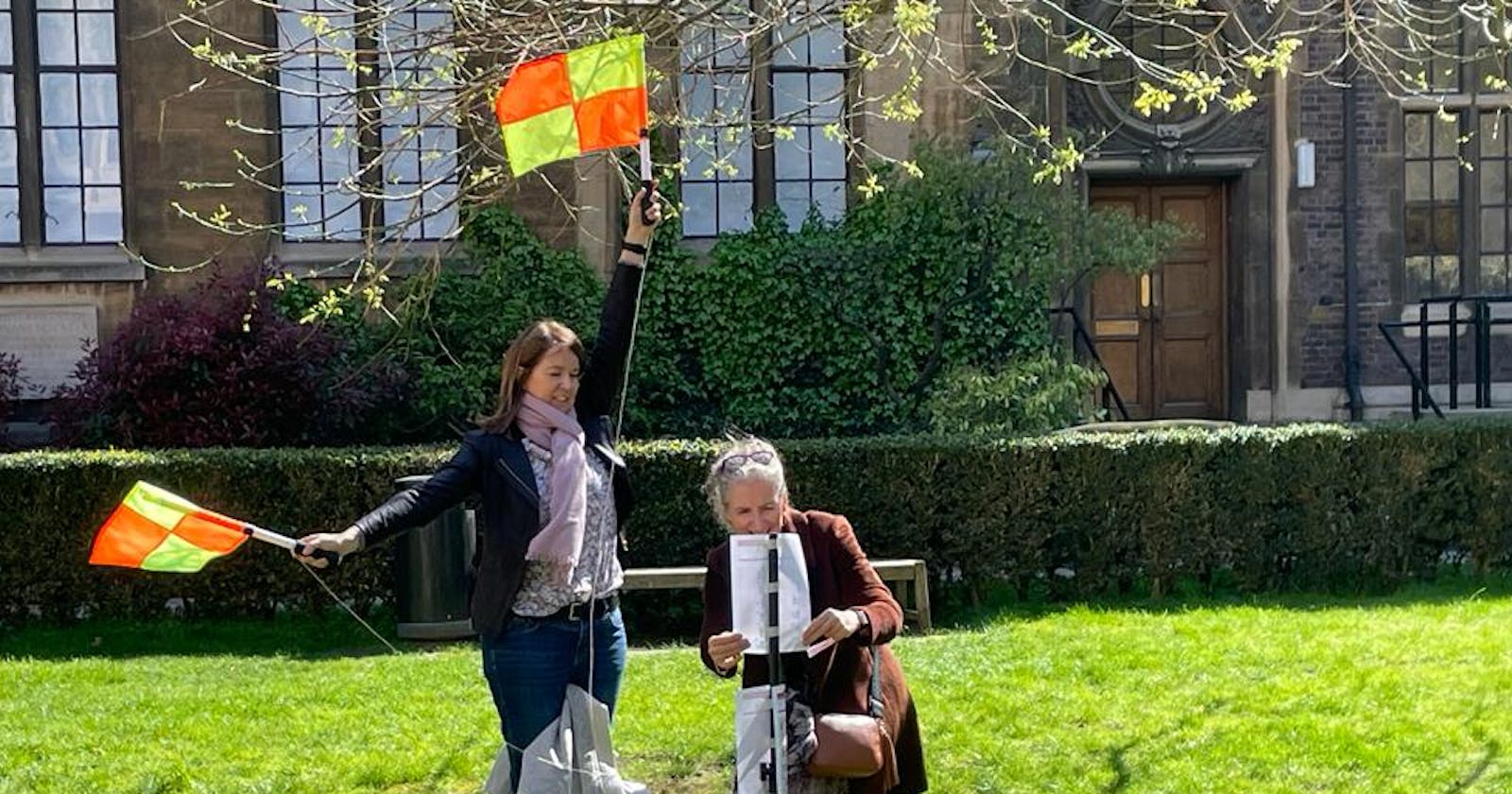The first in our "anatomy of a puzzle" series...
In 2021, as the pandemic was thawing, we set out to build a new puzzlehunt: The World’s Fair, a Jules Vernian Victorian steampunk adventure. (It eventually morphed into the Octonet puzzlehunt, but that’s a whole other story). Our ambition was to capture, across the various puzzles, the spirit and eclectic richness of the era: technological advancement, lightning-fast means of communication, scientific curiosity, dinosaurs, punchcards and the like!
Communications, in particular, seemed like great puzzle fodder. Having the players use the puzzle mechanics to communicate would mean the puzzle inherently required teamwork (which is always great, since it guarantees everyone will get a chance to take part). Moreover, it captured very well the 19th century zeitgeist: technology as bringing people together and making once impossible things seem easy.
We researched various Victorian era communication technologies: telegraphy, early telephones, optical telegraphs, and flag semaphore. Optical telegraphy seemed the most promising; it was distinctly 19th-century, very alien yet very intuitive, modern-feeling but manifestly obsolete. And most importantly, physical, and hence fun!
A Wikipedia deep-dive revealed another historical nugget: an early instance of wire fraud, perpetrated in 1834 using France’s optical telegraph network. The schemers bribed the optical telegraph operators in Tours to illicitly transmit stock-market information from Paris to Bordeaux, where it would be used to play the Bordeaux stock exchange. The information was encoded in errors deliberately inserted into the telegraph messages otherwise being sent (and hence undetectable to anyone not in-the-know). This seemed like ripe material for a puzzle mechanic.
We still had to figure out how we’d actually force the players to use whatever communication tools we put at their disposal: unless they were really far apart, they’d surely be able to just read the messages aloud to each other. (And if they were too far apart, it would hardly feel like a group activity anymore.) The solution we came up with was asymmetry: the message the sender thought they were transmitting could be entirely different from the one the receiver was reading out. Eventually, we settled on the senders transmitting a single word, letter-by-letter, while the receivers would decode each signal into a word, and the whole transmission into a question. The answer to the question would be the next word to be transmitted along the chain.
Finally, we weaved in the idea of encoding a secret message via deliberate errors, just as the fraudsters of post-Napoleonic France did: each question would include one word that was obviously missing a letter, or including one too many; putting the chain of errors together would produce the final answer.
As for the transmission mechanism, we eventually switched from optical telegraphs to flag semaphore (the latter being invented, in 1866, as a hand-held variant of the former). This was simpler to build and, as it turned out, a lot of fun; quite aside from the puzzle mechanics, the players loved waving the flags and spelling out the messages.
All-in-all, we were really happy with how this puzzle turned out. We got players to genuinely engage with a 19th century communications mechanism, weaved in a bit of actual history, while still adding enough twists and turns to make it baffling at first, and rewarding to solve. And the players certainly seemed to enjoy solving the puzzle as much as we enjoyed designing it!

